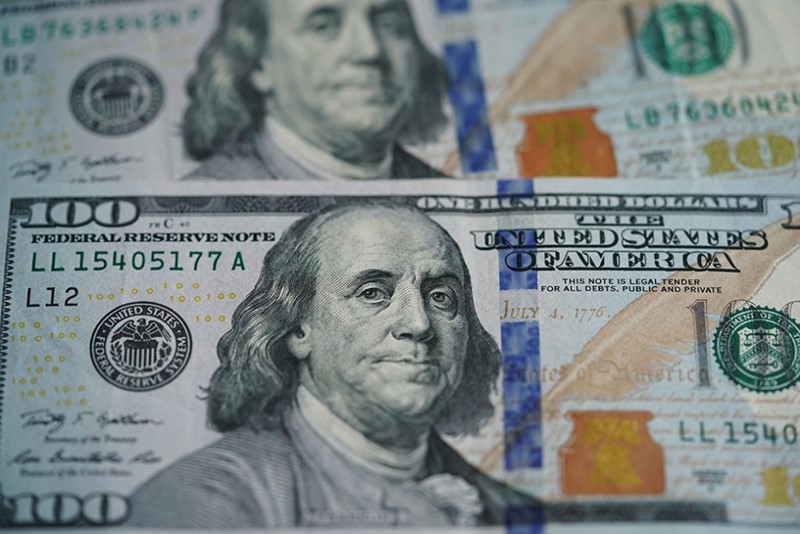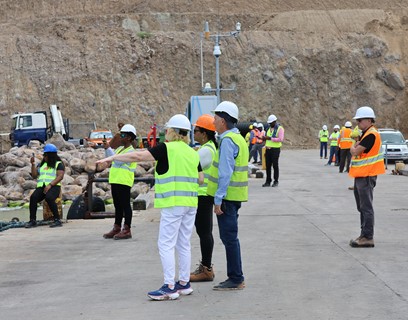
This is a joint publication between the Center for American Progress and the Kirwan Institute for the Study of Race and Ethnicity at The Ohio State University. The column was co-authored with Darrick Hamilton of the Kirwan Institute.
Authors’ note: CAP uses “Black” and “African American” interchangeably throughout many of our products. We chose to capitalize “Black” in order to reflect that we are discussing a group of people and to be consistent with the capitalization of “African American.”
The new coronavirus, which causes the disease COVID-19, continues to spread quickly, threatening the health and economy of the United States. Since January, more than 8,300 Americans in 50 states; Washington, D.C.; and three territories have tested positive for the COVID-19 virus. And many more cases have undoubtedly not been discovered due to a lack of testing. The outbreak of this deadly respiratory illness is especially worrisome for Black, Latinx, and other vulnerable communities.
These communities are disproportionately uninsured or underinsured and have fewer financial resources and employment benefits with which to weather this major public health emergency. Nothing demonstrates this vulnerability more vividly than the dramatic and persistent intergenerational racial wealth gap. The COVID-19 pandemic is another stark reminder that the next administration must address wealth inequality and make asset security a top priority.
How wealth affects people’s ability to respond to a pandemic
When unexpected emergencies occur, an individual’s or a family’s wealth can provide them with protection. Wealth, especially liquid wealth—resources that can be readily converted into cash—allows individuals and families to respond to life events and unexpected expenses, such as loss of income and virtually any expenses that may result from a pandemic. Unfortunately, and unjustly, wealth has been unequally distributed in America. The typical white family has 10 times the wealth of the typical Black family and seven times the wealth of the typical Latinx family. This stark and persistent racial wealth gap leaves Black, Latinx, and low-asset people vulnerable; they are less likely to afford several days—let alone weeks—without income. And Black and Latinx households have fewer resources in case of an emergency, such as COVID-19 or future pandemics. It’s important to note that these communities lack wealth not because of individual choices but instead due to 400 years of collective harms by federal, state, and local governments compounding over time.
The centerpiece of the public health response to COVID-19 is social distancing. The goal of social distancing is to prevent contagious people from coming into close contact with healthy people in order to slow down the spread of contagious diseases, which in turn helps prevent a spike in cases that overwhelms the health care system. To lessen the chances of catching the COVID-19 virus, experts recommend that people stay at least six feet away from each other. Examples of social distancing include telework and school closures.
While a smart public health policy, the ripple effect of social distancing will be particularly detrimental for Black and Latinx communities, especially if governments don’t take actions to minimize direct impacts on Americans’ pocketbooks. This is where the economic security that wealth provides comes in. Wealth is one’s assets minus their debts. Black and Latinx communities are less likely to own assets. For example, almost 30 percent of Black college-educated households, and 20 percent of Latinx college-educated households, would not be able to afford to pay all their bills after a $400 emergency expense. These figures increase to nearly 60 percent and 50 percent, respectively, for non-college-educated Black and Latinx households. With little to no liquid wealth and vulnerable job prospects, Black and Latinx families are more likely to face greater housing insecurity, including exposure to eviction and foreclosure, which in turn will exacerbate the racial homeownership gap.
America is on the brink of entering a recession that will have particularly negative effects for Black and Latinx communities, who are typically the first to feel the effects of economic downturns. They are also last to recover from economic swings. For example, when reviewing the median wealth of Black and white families following the Great Recession, Black families’ wealth in 2016 was about half of the median Black wealth recorded right before the Great Recession. In comparison, the median white wealth in 2016 had grown by almost 15 percent since the Great Recession. This highlights the larger impact that a recession can have on the racial wealth gap. In short, a recession only exacerbates the already existing vicious cycles of low wealth for Black and Latinx families.
Furthermore, both Black and Latinx employees are paid lower wages than their similarly situated white counterparts. For example, Black, Asian, and Latinx workers are overrepresented in the restaurant and hotel industry, two industries facing shutdowns in response to the coronavirus. Furthermore, Black workers often hold occupations that are less stable, such as jobs in retail and home health and jobs as nursing home aides. In addition to being more likely to hold low-paying jobs, Black and Latinx workers are more likely to hold jobs that are less likely to offer comprehensive benefits. Just 16 percent of Latinx workers and 20 percent of Black workers have the ability to work from home, compared with 30 percent of white workers. Black and Latinx workers also have less access to paid sick leave and paid leave for child care. When considering the intersection of race and gender, this inequality is particularly daunting for Black and Latinx women, who often have a greater share of caregiving responsibilities. They are also more likely to hold low-paying service jobs than their white counterparts. In addition, these jobs numbers do not include all the Black and Latinx men who are incarcerated and thus rendered “invisible” in labor market statistics.
This pandemic has brought to light the harm that a lack of wealth can inflict on American families. In the current situation, it is crucial to realize that wealth provides security to handle an unexpected health and financial emergency. And those families who are more likely to experience the fallout from this crisis are disproportionately nonwhite families with low levels of wealth.
Policy recommendations
A long-lasting American structure of racially segregated occupations and jobs has repeatedly relegated Black and Latinx people to jobs with low and volatile wages; few benefits, including lack of health insurance; and limited agency in achieving flexible working conditions, which restricts their ability to work from home or take paid time off. In the wake of the coronavirus crisis, policymakers should take the following steps:
Ensure access to affordable or no-cost medical care
Persistent financial barriers to health care coverage may prevent Black and Latinx people from accessing needed medical care—including the treatments they need if they are exposed to the COVID-19 virus. Any states that have failed to expand Medicaid should do so immediately. Anyone needing care should not face the financial stress or stigma that may deter them from seeking coverage and thereby put themselves and others at risk.
Ensure paid sick leave and paid family and medical leave are available to all workers
While Congress took a first step toward providing targeted protections for workers, it’s important to extend protections to ensure that workers across the country have access to paid sick days and paid family and medical leave to address their health and caregiving needs.
Send cash directly to households
As families and communities work to manage their expenses in this volatile time, it’s important that the government consider different options to provide relief to workers experiencing this economic shock.
Increase access to capital for minority businesses
Many businesses owned by Black and Latinx Americans have limited capital to survive over the short and long term. Therefore, it’s imperative that policymakers ensure that these businesses get access to capital.
Take comprehensive action on student loan debt
There are more than 40 million federal student loan borrowers who may struggle to make their payments during the outbreak. Black borrowers take on more debt and are less likely to get the same return on investment as their white counterparts; they are also more likely to default. Policymakers must ensure a robust package that at least stops the accumulation of additional interest and provides a moratorium on all student loan payments and collections activity.
Temporarily waive all late payments for credit card and auto loan payments
Black and Latinx households are less economically secure than white households. Black borrowers tend to have more costly debt and pay more for installment loans such as credit cards and auto loans. This is partially due to credit steering and credit market discrimination.
Place a moratorium on housing evictions and home foreclosures
State and local governments should strongly consider efforts across the country to place moratoriums on housing evictions and home foreclosures.
Conclusion
Following the crisis, it’s important to take on structural changes to U.S. economic policies to ensure that the necessary health and economic infrastructure is in place the next time the country faces a pandemic or looming disaster stemming from climate insecurity. Closing the unjust racial wealth gap should be a top priority to ensure more equitable, just, and resilient communities.
Danyelle Solomon is the vice president of Race and Ethnicity Policy at the Center for American Progress. Darrick Hamilton is the executive director of the Kirwan Institute for the Study of Race and Ethnicity and professor of public affairs, economics, sociology, and African and African American studies at The Ohio State University.


